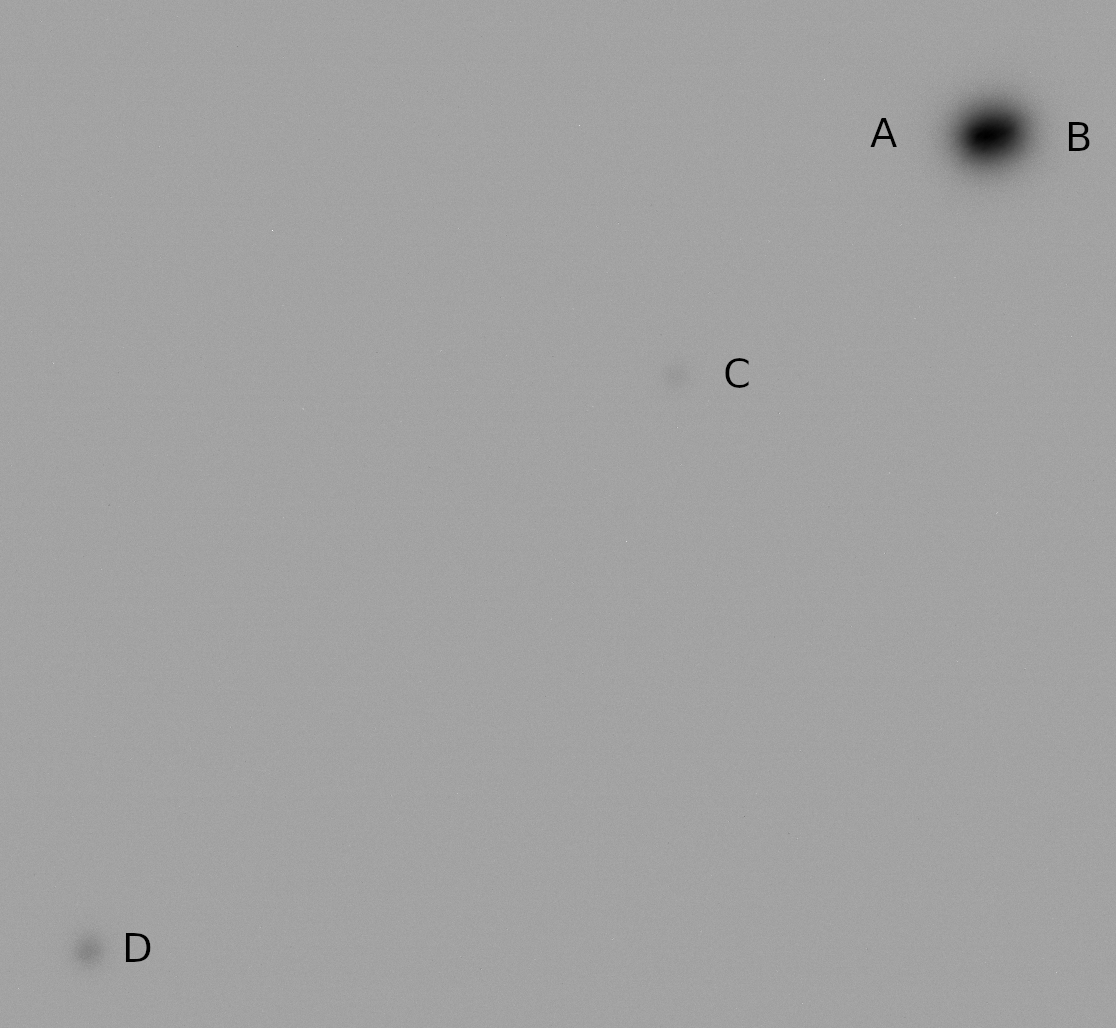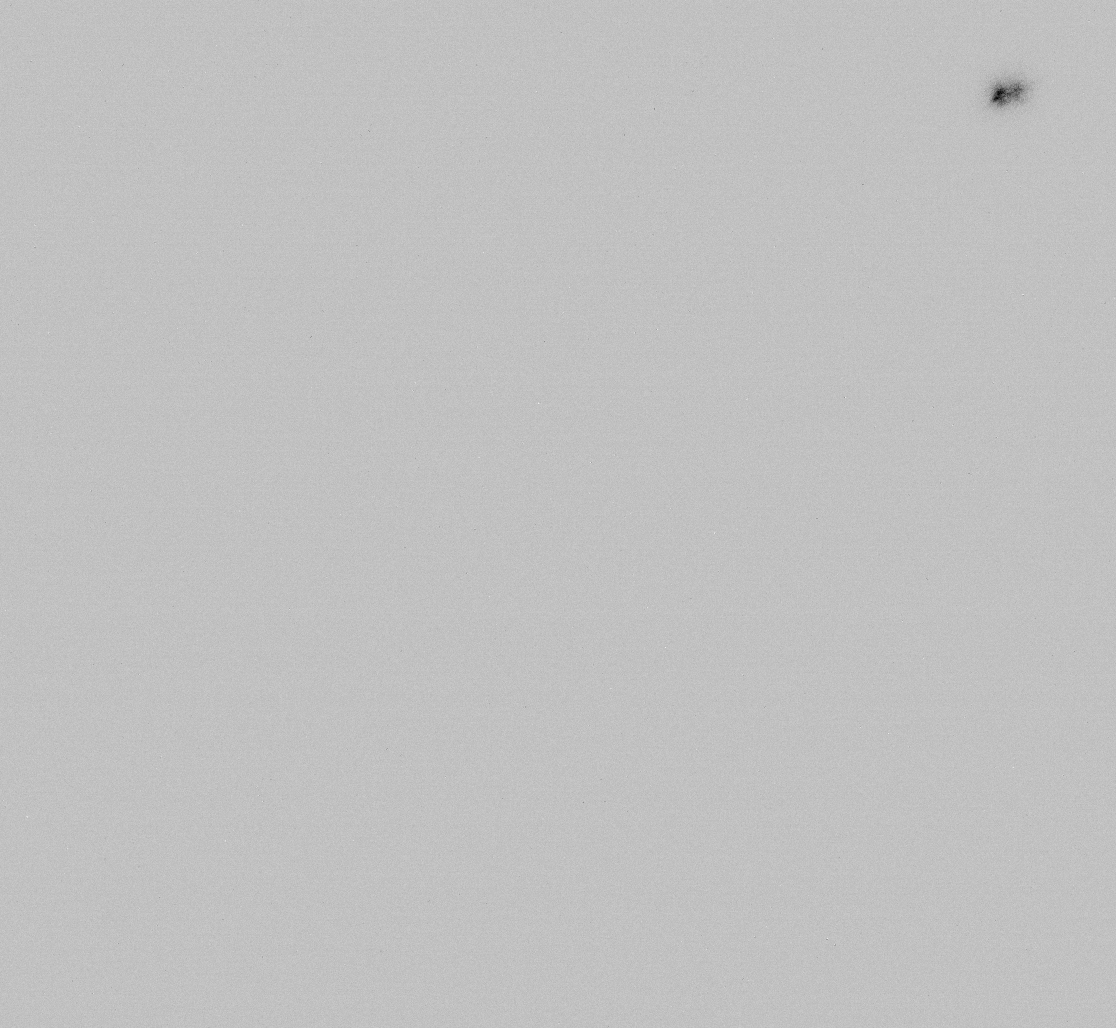Two Infinities
Thu, 13 May 2021
Testing my 25" Diameter Slipstream Telescope and ZWO ASI183MM Camera
These two images of the star system STF1879 illustrate some properties of telescope and camera used to capture them. Only the two stars A and B are gravitationally bound. Parallax measurements show that A and B are 44 parsecs away while C and D are much further away.
The first image, exposed for 1 second at gain 65 on the ZWO ASI183MM shows the four stars A-D listed for the system in the Washington Double Star catalog. From SIMBAD one can find that the magnitude of star C is greater 13, 13.23 in visual light. Star A is magnitude 7.72, so star A is about 160 times a bright as star C, and the dynamic range of the camera is over 5 magnitudes as the image of A is not saturated.
The second image was exposed for 20 milliseconds at gain 65 and shows the separation of A and B. These two stars are about 75 AU apart -- dwarf planet Eris is about 68 AU from our Sun -- and revolve about each other in about 250 years.
The second image also hints at limits of 20 millisecond exposures with this rig (~0.3 square meters of light gathering mirror effectively focused at 5 meters). At magnitude 13.2 star C is close to the limit of detection with 1 second exposures, so the detection limit for 20 milliseconds should decrease by about 4.2 magnitudes to about magnitude 9. For example, we wouldn't expect to be able to detect star D at magnitude 11.6, and, indeed, we cannot.


posted at: 17:56 | path: | permanent link to this entry
